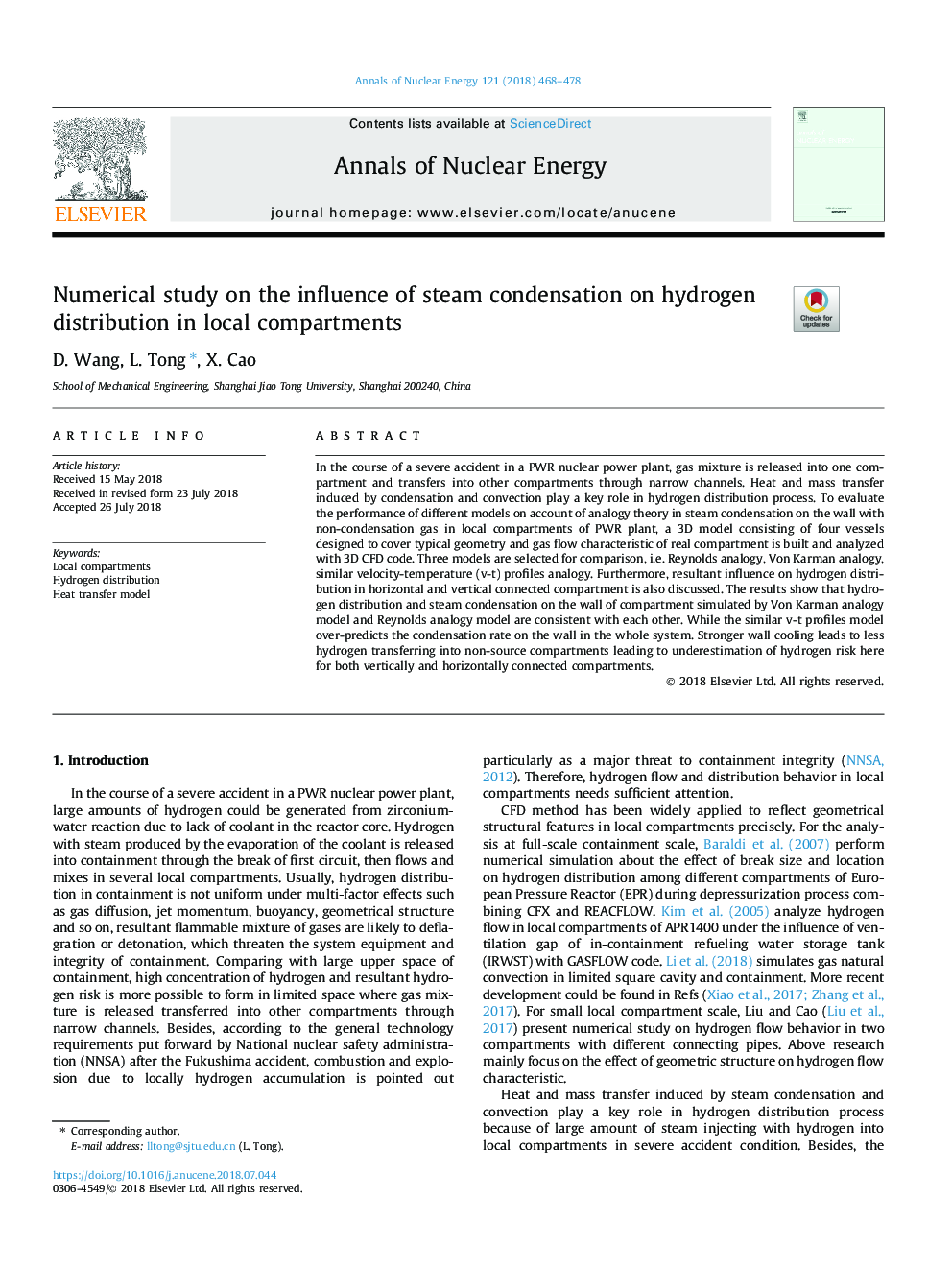| Article ID | Journal | Published Year | Pages | File Type |
|---|---|---|---|---|
| 11007347 | Annals of Nuclear Energy | 2018 | 11 Pages |
Abstract
In the course of a severe accident in a PWR nuclear power plant, gas mixture is released into one compartment and transfers into other compartments through narrow channels. Heat and mass transfer induced by condensation and convection play a key role in hydrogen distribution process. To evaluate the performance of different models on account of analogy theory in steam condensation on the wall with non-condensation gas in local compartments of PWR plant, a 3D model consisting of four vessels designed to cover typical geometry and gas flow characteristic of real compartment is built and analyzed with 3D CFD code. Three models are selected for comparison, i.e. Reynolds analogy, Von Karman analogy, similar velocity-temperature (v-t) profiles analogy. Furthermore, resultant influence on hydrogen distribution in horizontal and vertical connected compartment is also discussed. The results show that hydrogen distribution and steam condensation on the wall of compartment simulated by Von Karman analogy model and Reynolds analogy model are consistent with each other. While the similar v-t profiles model over-predicts the condensation rate on the wall in the whole system. Stronger wall cooling leads to less hydrogen transferring into non-source compartments leading to underestimation of hydrogen risk here for both vertically and horizontally connected compartments.
Related Topics
Physical Sciences and Engineering
Energy
Energy Engineering and Power Technology
Authors
D. Wang, L. Tong, X. Cao,
